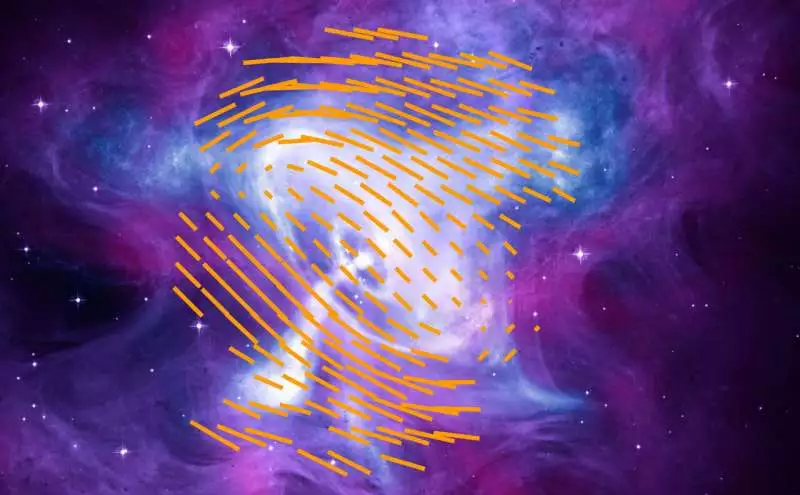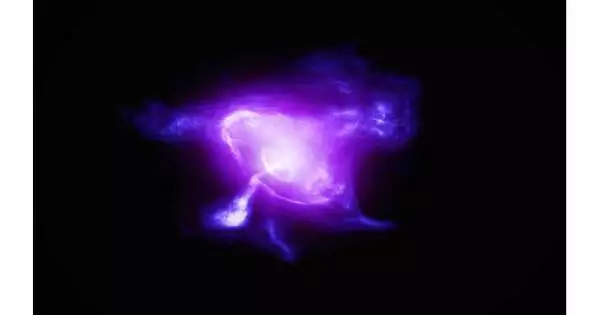On February 22, 1971, a sounding rocket with specialized sensors launched from Wallops Island, Virginia, with a target in its sights: the Crab Nebula, a prominent celestial object 6,500 light-years away. Scientists back then initially received scientific data on a strip chart recorder, a machine that printed signals on paper, before recovering physical tapes from the experiment. On the day of the launch, astronomer Martin Weisskopf and his associates took the first step in their analysis by using a ruler and pencil to measure the separation between the signals.
Weisskopf, a former astronomer at NASA’s Marshall Space Flight Center in Huntsville, Alabama, said that what makes science so lovely and thrilling is that, for those brief moments, you’re seeing something that no one else has ever seen before.
Years later, Weisskopf proposed the creation of a powerful Earth-orbiting satellite that would be equipped with the same kind of instruments, allowing for much more in-depth measurements of the Crab Nebula and other mysterious cosmic objects. On December 9, 2021, that satellite was launched as NASA’s Imaging X-ray Polarimetry Explorer (IXPE).
“This demonstrates unequivocally that even the more intricate models created in the past with the aid of cutting-edge numerical techniques fall short of accurately representing the intricacy of this object.“
Niccolò Bucciantini, lead author of the study and astronomer.
Now, more than 50 years after the sounding rocket experiment, researchers have used IXPE to create a detailed, nuanced map of the Crab Nebula’s magnetic field, revealing more of its inner workings than ever before. The new findings, which have been accepted for publication in the journal Nature Astronomy (preprint available), assist in resolving old puzzles regarding the extensively studied Crab Nebula and present fresh research issues.
IXPE data reveal that the magnetic field of the Crab Nebula resembles that of the similarly shaped Vela Pulsar Wind Nebula. In contrast, the crab’s magnetic field turbulence was unexpectedly patchier and asymmetrical.

Located about 6,500 light-years from Earth, the Crab Pulsar is a well-known astronomical object that was created by the explosion of a large star. A donut-shaped magnetic field was found in the nebula surrounding the crab by NASA’s Imaging X-ray Polarimetry Explorer (IXPE). The magnetic field’s shape, as determined by IXPE, is highlighted by the orange lines. It is overlaid on a composite image created using information from the Chandra X-Ray Observatory (blue and white), Hubble Space Telescope (purple), and Spitzer Space Telescope (pink). Credit: Magnetic field lines: NASA/Bucciantini et al; X-ray: NASA/CXC/SAO; Optical: NASA/STScI; Infrared: NASA-JPL-Caltech
Niccol Bucciantini, the study’s lead author and an astronomer at the INAF Arcetri Observatory in Florence, Italy, stated that “this is a clear indication that even the more complex models developed in the past, with the use of advanced numerical techniques, do not fully capture the complexity of this object.”
The Crab Nebula was created by a supernova that was recorded in the year 1054 and is a favorite research subject for astronomers. The crab pulsar, which had the same mass as two suns and had a diameter similar to Huntsville, Alabama, or Manhattan, was left behind by the explosion. Pulsar wind nebula is the collective name for the erratic collection of gases, shock waves, magnetic fields, high-energy light, and particles emanating from the rotating pulsar. These unusual circumstances create a strange environment that is still not fully understood.
By measuring the polarization of X-rays from the Crab Nebula, which is extremely bright in X-rays, Weisskopf and associates hoped to gain new insight into this extreme environment. X-ray polarization provides scientists with information about the magnetic field’s direction and degree of organization in various regions of a cosmic object. The geometry and turbulence of the magnetic field control the acceleration of particles up to the speed of light.
In 1971, Columbia University researchers Martin Weisskopf and his team used the Aerobee-350 sounding rocket to discover X-ray polarization for the first time in a celestial object, the Crab Nebula. Gabriel Epstein, Weiskopf, Richard Wolff, and Richard Linke are pictured from left to right alongside Robert Novick. NASA is to be credited.
The 1971 sounding rocket experiment resulted in the first X-ray polarization measurements during the five minutes it was above the Earth’s atmosphere.
In 1975, researchers used a satellite called OSO-8 to continue their work. This satellite also measured the Crab Nebula’s X-ray polarization. The Crab Nebula has an average polarization of about 20%, according to data from both the rocket and the satellite.
Weisskopf continued his investigation of the Crab Nebula while serving as the project scientist for NASA’s Chandra X-Ray Observatory, which was put into operation in 1999. We captured stunning images of the nebula and pulsar with Chandra, and we could make out the jets and different structures, he claimed. Chandra’s X-ray imaging helped researchers better understand the connection between the pulsar’s energy and X-ray emissions by revealing wisp-like structures that move in the nebula.
Recent large telescopes have focused on the Crab Nebula to learn more about this enigmatic supernova remnant. However, only IXPE can analyze the polarization of X-rays from Crab, which is a gauge of how electromagnetic fields are organized.
The Crab is among the most investigated high-energy astrophysical objects in the sky. Therefore, it is very exciting that by using IXPE’s “polarized lenses,” we might discover something new about this system, according to Michela Negro, a research scientist at NASA Goddard Space Flight Center associated with the University of Maryland, Baltimore, and a co-author of the study.
IXPE discovered an average polarization across the entire nebula that was similar to what Weisskopf and colleagues discovered in the 1970s. IXPE was able to examine the variations in polarization throughout the entire object and fine-tune the angle of polarization using more advanced equipment. In the outer parts of the nebula, which are light-years from the pulsar, where polarization is lower, scientists observe areas of intense polarization.
As a result, scientists were able to examine X-rays from the Crab Nebula as well as those coming from the pulsar itself or the magnetic field sphere it was surrounded by. Although the precise location and method of origin are still unknown, the results point to the “wind” region of the outer magnetic field as the likely source of those X-rays. Particles are being propelled nearly at the speed of light by shock waves produced by the pulsar’s “wind” within the magnetic field.
Weisskopf, who served as the mission’s initial principal investigator, said, “I’m very proud of everyone associated with IXPE. Everyone put in a lot of effort, and the product lived up to expectations. Weisskopf says, “It’s like someone told me, ‘Martin, you did good.'” He was involved in the 1971 experiment that provided the foundation for the new findings.
More information: Niccolò Bucciantini et al, Simultaneous space and phase resolved X-ray polarimetry of the Crab Pulsar and Nebula, arXiv (2022). DOI: 10.48550/arxiv.2207.05573





